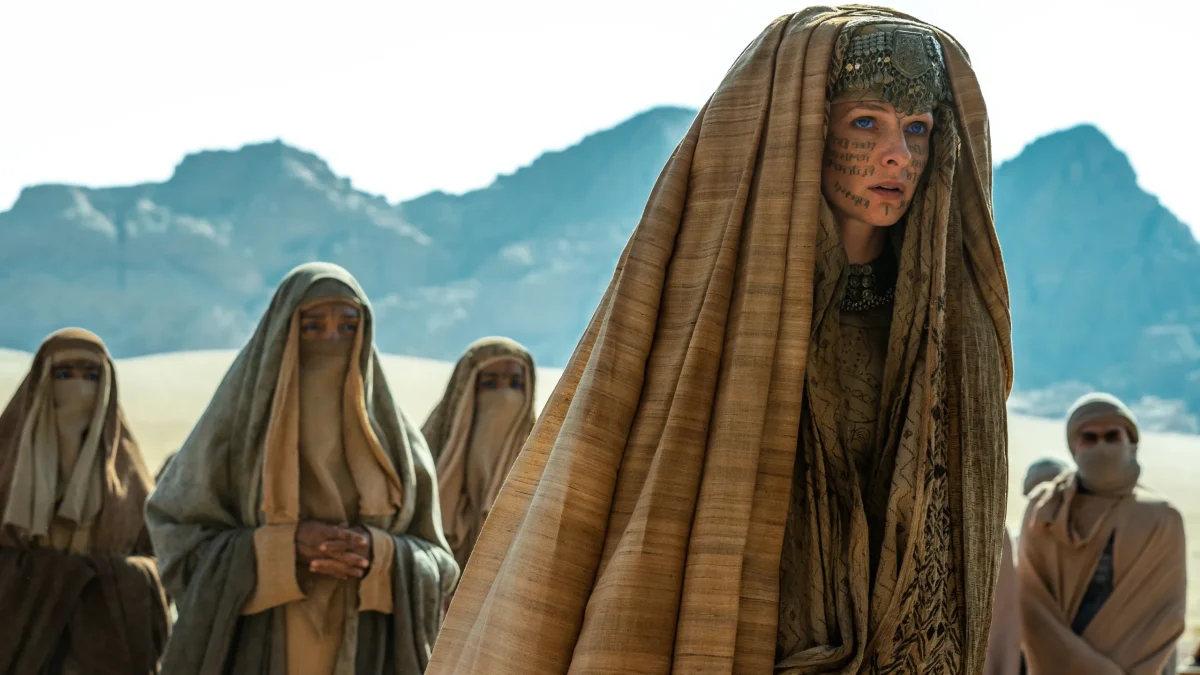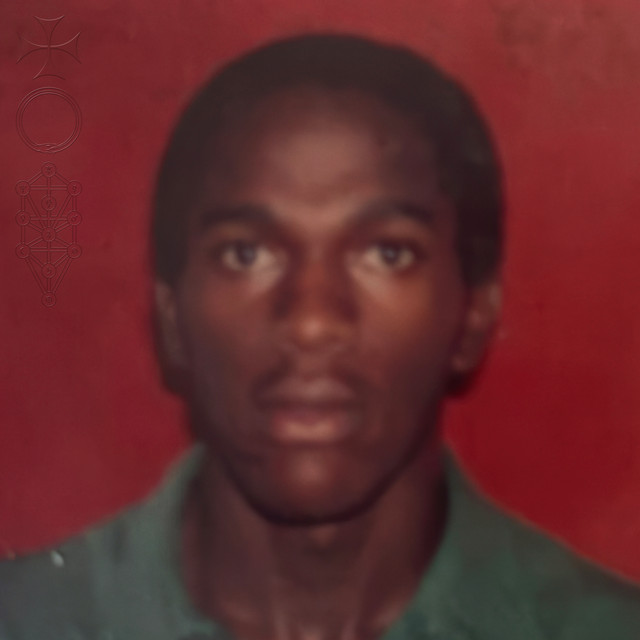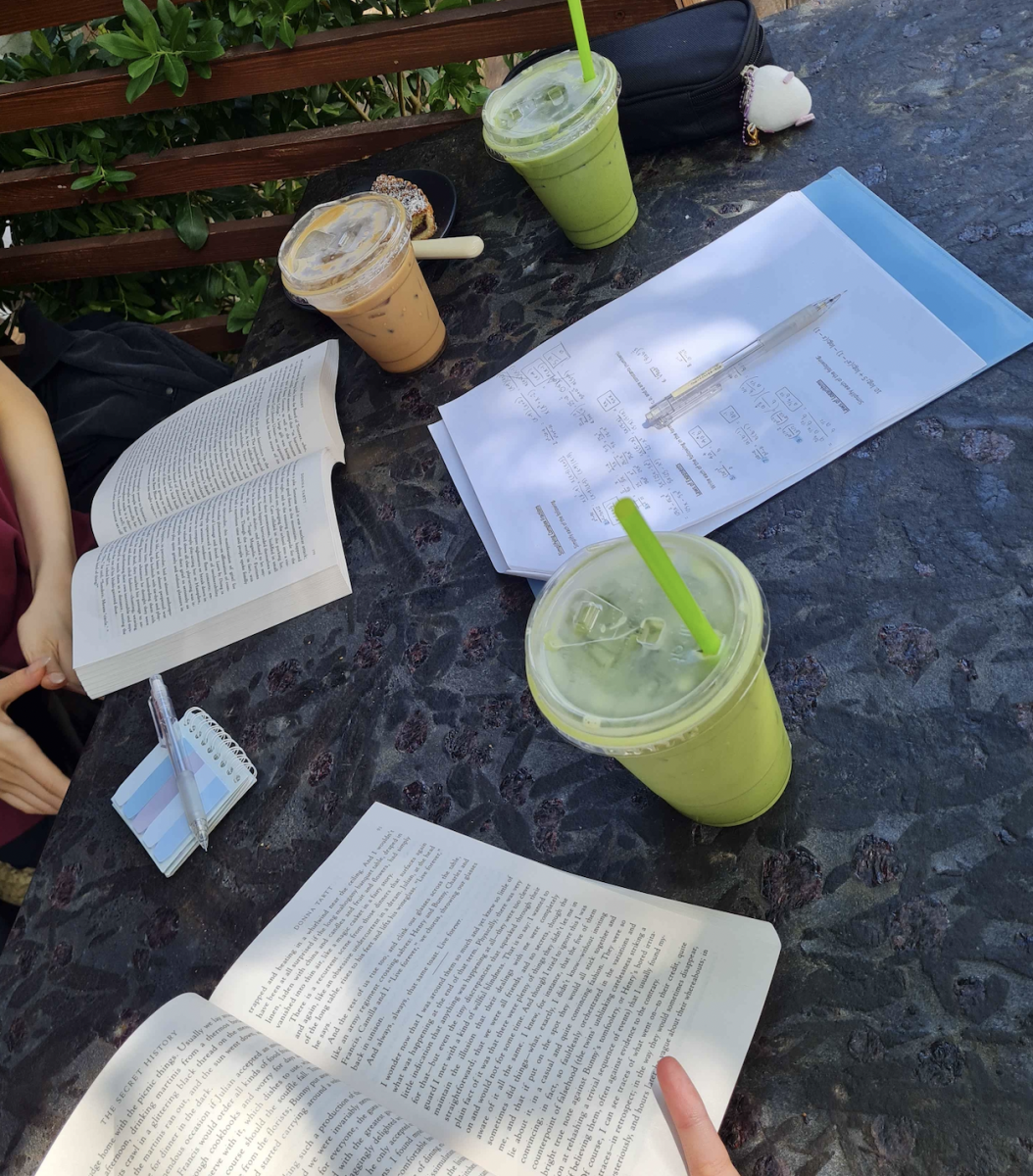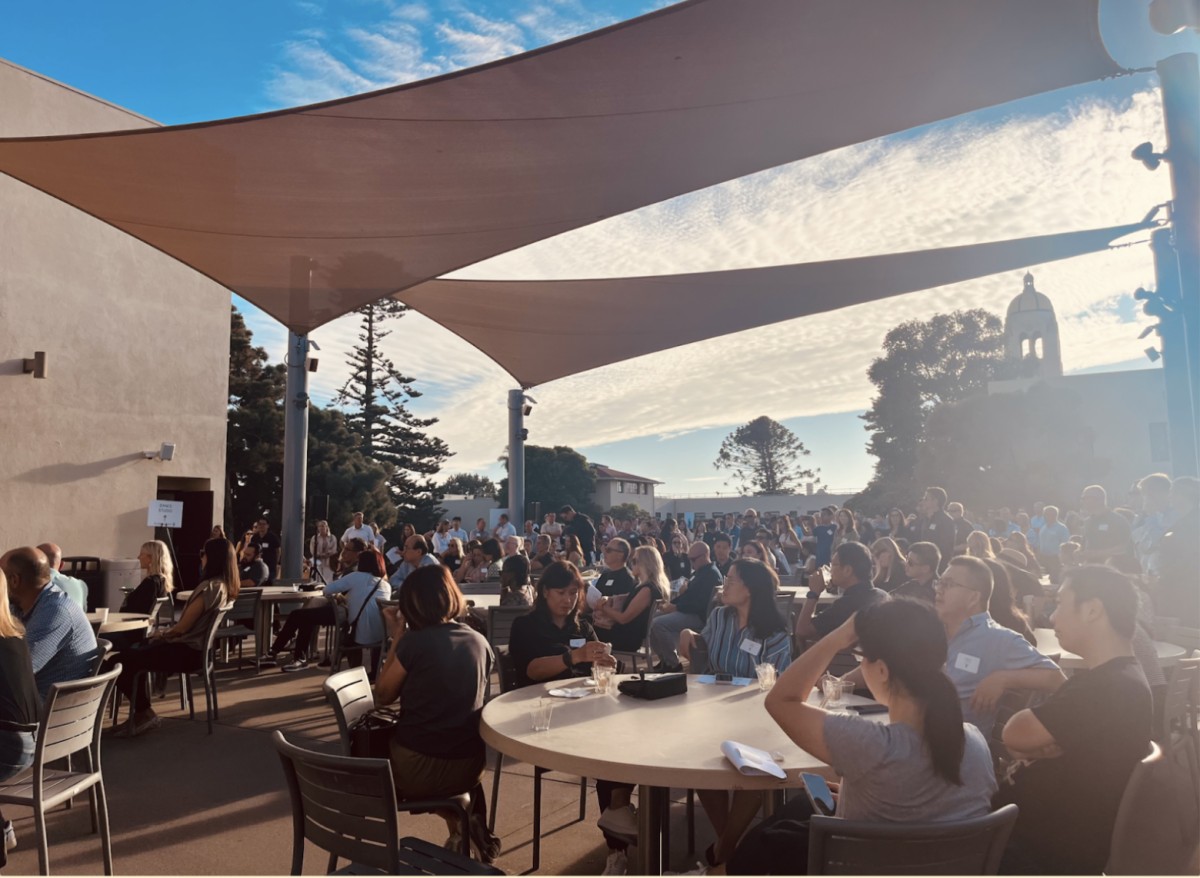Frank Herbert’s written work is sprawling and complex. So much so that New York Times critic Manohla Dargis described it as “a great juicy slab of a book, a meticulously detailed and enjoyably engrossing fantasy about belief and doubt, survival and struggle, idealism and nihilism.” Herbert’s first Dune novel was released in 1965, and five more main novels of the series followed over the next few decades.
Dune: Part 2 is a science fiction film set in a feudal interstellar society following Paul Atreides’ rise to power on the desert world Arrakis. The story involves heavy Islamic influences, and directed by Denis Villenueve, the movie presents an updated version that evokes boundless questions about religion, power, and society. In order to ask these questions, it is important to first understand Villenueve’s changes.
Many of the changes in the movie are small cuts to simplify the storyline. For example, some characters are missing, like Count Fenring, whose wife Margot seduces antagonist Feyd-Rautha Harkonnen. “It doesn’t have a huge effect on the plot,” said Lexi Black (‘24), who has read the books and watched the movies. “Count Fenrings just enhances the character of Feyd-Rautha, and I think they got his character across enough in the movie that they didn’t need that.”
Similarly, in the book, Paul and Chani have a child who gets killed in the raid. This entire character is omitted from the movie.
Social Science teacher Dr. Will Peters, who has also read the books and watched the movies, referenced Alejandro Jodorovsky, a filmmaker in the 70s. Jodorovsky pitched a Dune movie to studios, proposing that it would need 10 to 14 hours to do the story justice. “Denis Villeneuve, I think, is going to package this into a total of seven hours across three movies,” said Dr. Peters. “Some of the complexities that are essentially needless, you can strip away, and I’m okay with that.”
Despite the changes, Dr. Peters thought Villeneuve’s Dune is as good of an interpretation of the books as you can get. “You have to kind of treat them differently,” he said. “But in attempting to capture the messages, ideas, themes, and feelings of the book, I can’t think of a much better way to do it – it’s pretty incredible.”
Chani, played by actress Zendaya, morphs into a more nuanced and independent character in Villeneuve’s vision. As the romantic partner to Paul Atreides, in the books, she is supportive of Paul’s every move along the way. In the movie, she serves as the main point of contrast against his rise to power as a messianic figure, and against the prophecy as a whole. “For a 2024 movie, I think it makes more sense that she has her own opinion,” said Lexi.
Biology teacher Ms. Gillian Belk, another avid fan of the books and movies, pointed out, “in the book, you hear everyone’s internal dialogue, so a lot of what Chani says in the movie is Paul’s internal dialogue in the book.” That change, Dr. Peters laughed, is much better than the inclusion of a voiceover or omniscient narrator.
Another significant change in the movie is the regional divide between the Fremen, inhabitants of the desert planet Arakkis, into North and South, and the identification of the Southern Fremen as fundamentalists. In the movie, the Northern Fremen are hesitant toward Paul, as they live on the outskirts of the cities and are more resistant to outsiders. The Southern Fundamentalists, on the other hand, represent Paul’s devoted followers, the Fremen who believe in the prophecies of a Lisan al Gaib who will come and save their people.
Ms. Belk proposed that the introduction of the word “fundamentalists” was for ease of modern viewers’ understanding. “I don’t know if the term fundamentalist was a common description in the 1960s,” she said. “So I think that was just for the modern audience.”
As for the regional divide between the Fremen, she said, “I think they did that separation for just clarity’s sake for telling a story.” Essentially, it visually emphasizes the variation in Fremen opinions toward Paul. However, this simple cinematic fix also comes with larger implications.
“That was something in the movie I didn’t expect,” said Lexi, explaining that the separation of Fremen into only two groups was striking to her since the planet of Arakkis is so large and spread out. “One connection I thought about was with Sunni and Shia Muslims, and the idea of two factions of the same religion, one more fundamentalist than the other,” she said.
Dr. Peters made the same assessment. “I interpret it as Villeneuve’s way of showing there are regional differences in Islam, or there are different interpretations in Arabic culture of prophecy and the future – it’s not all the same,” he said.
Kenan Begovic (‘24) emphasized that the Southern Fremen live in much harsher and more desolate conditions than the Northern Fremen, and this is why they are identified as fundamentalists. “That land is so barren, with so little water and life. Of course religion has a greater hold in the population that has suffered much more,” he said.
As the Princess Irulan, played by Florence Pugh, puts it, “repression only makes a religion flourish.”
Despite the movie’s nuanced portrayal of religion, it cannot capture all of the philosophy and psychology that is present in the Dune books. As Dr. Peters explained, “The key difference is we lose the complexity of Islamic philosophy, Islamic theology, and Arabic heritage.” He added, “It’s there in the movie, but not with the depth and the richness that you get in the books, with the ideas of time and possibility, predeterminism, human nature, and otherworldly messianic expectation.”
Dr. Peters acknowledged that Dune: Part 2 is a Hollywood blockbuster that is generating billions of dollars. “People aren’t gonna go listen to a lecture about Islamic philosophy,” he noted.
Lexi, on the other hand, reflected on a different experience. “I did not think of the books as heavily related to one religion,” she said. In the Dune books, the religious scripture called the “Orange Catholic Bible” is an amalgamation of many different religions across the Dune universe. Lexi recalled the Fremen religion, in the book, as more based upon its difference with the Orange Catholic religion the rest of the universe follows. “It seems in the book their religion is just some sort of different faction, and there’s more relation to present day Islam and Muslim traditions in the movie.”
Kenan, who is a Muslim and leader of the Muslim Student Association at Bishop’s, affirmed the unmistakable connection between Islam and the Fremen practices depicted in the movie. “If you compare a Muslim prayer and a Fremen prayer side by side, they’re pretty similar, and the head scarves and coverings the Fremen wear are very stereotypically Muslim,” he said. “As someone who’s been inside mosques, the music and chanting in Dune is a very similar feeling of grandeur.” As he further explained, the idea of power in the people is very evident in Muslim prayer. This power is present in the movie, particularly in scenes when masses of Fremen chant “Lisan al Gaib.”
Many critics and users on online forums dismiss the movie as appropriating Islam and criticizing the religion. “I think Islam is the easiest religion and the most famous religion to attribute extremism to,” Kenan said. However, he noted flaws with this comparison and strongly opposed the idea of Dune as anti-Muslim.
“When you compare Paul and the prophet Muhammad, that’s when you begin to see the biggest differences,” he said. “They both came from above and they both received some form of foresight from God, but one chose to live his life with utmost character, and one chose to fight a holy war for revenge. That contradicts the religion itself.”
In some ways, the movie displays the strength of religion: the Fremen are able to survive in a harsh environment, and they live with unwavering hope of a better future ahead.
“I personally felt, as a non-Muslim, that it highlighted some of the richness, complexity and beauty of Islamic culture,” Dr. Peters said. “The language, the Arabic traditions, the anti-imperialist struggle that Arabs and Muslims have dealt with for hundreds of years – it really captures all of that beautifully.”
In the overall themes of Dune, Ms. Belk felt that religion was not central, and the Islamic aspects of the movie could be replaced by any other religion for the story to have the same effect. “It could be any kind of fundamentalism and extremism that you want to think of, from any religion out there,” she said. “The story is about people getting swept up by a movement; this idea that a mass of people are brainwashed by some ideology, and there’s one person at the helm,” she said.
Kenan said, “Dune is not a critique of religion, it is a critique of heroes.” Ms. Belk, accordingly, said that Dune is the opposite of all the Marvel movies, in which the world is in turmoil, there is an evil villain, and one fabulous superhero saves the day. “Dune is the antithesis to those types of movies,” she said. “You find yourself rooting for Paul in the same way you root for a superhero, but later, all these people will die for his cause, and you don’t know what’s going on. So it’s a warning not to blindly follow those superheroes.”
Dr. Peters acknowledged that the idea of a messiah or some sort of savior exists in many different religions. “What’s interesting about Dune is that it’s a critique of how difficult it is to separate belief and passion and religious fervor from calculated political decision making.” In that sense, the overarching societal exploration of Dune can be applied to any religion in interaction with politics.
“That being said, I think it is firmly rooted in Arabic heritage,” he said. “And so it is a raw appreciation of the beautiful and horror-filled realities of religion.”








